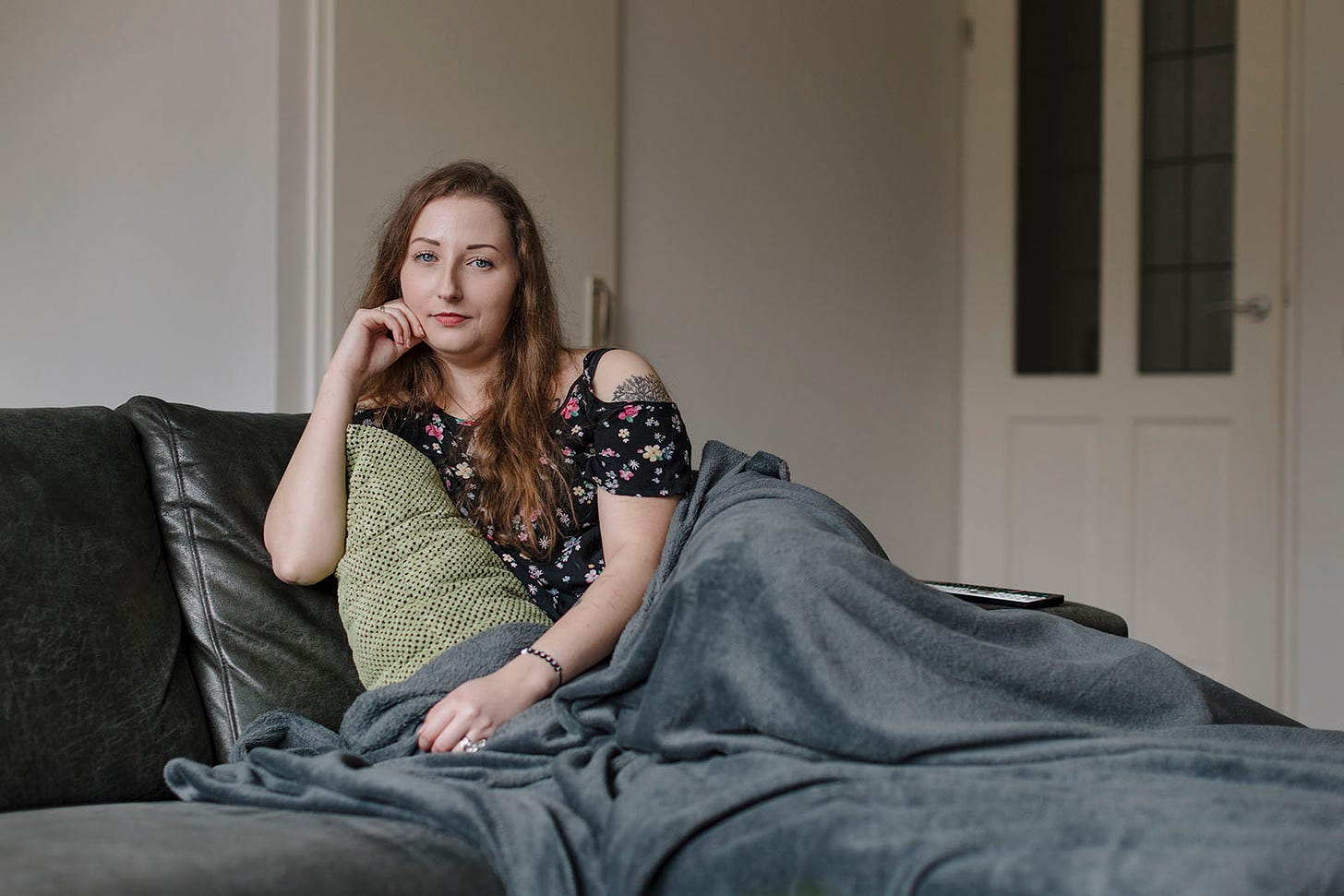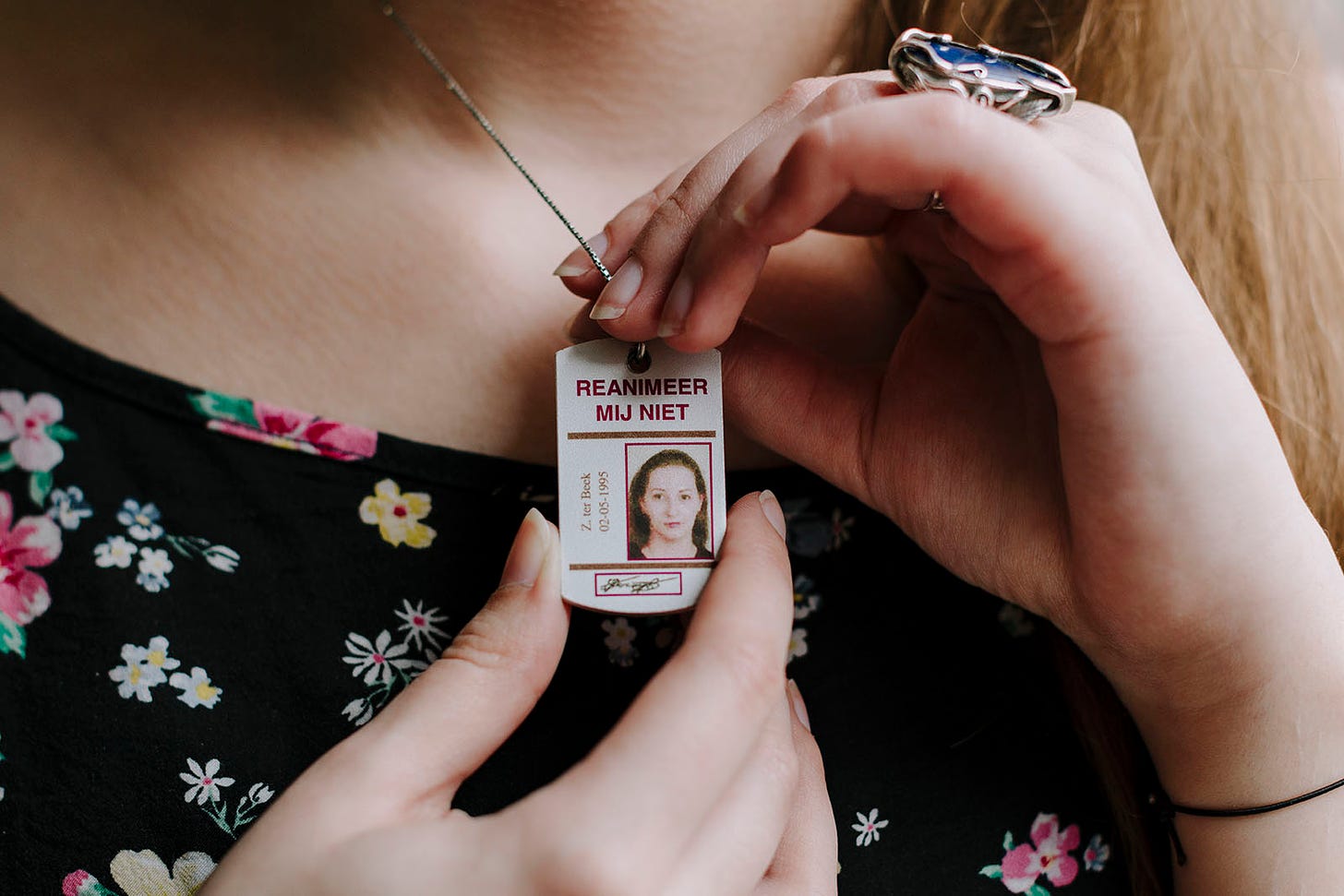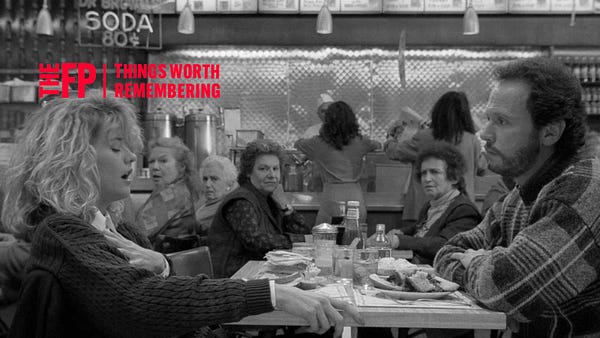
Zoraya ter Beek, 28, expects to be euthanized in early May.
Her plan, she said, is to be cremated.
“I did not want to burden my partner with having to keep the grave tidy,” ter Beek texted me. “We have not picked an urn yet, but that will be my new house!”
She added an urn emoji after “house!”
Ter Beek, who lives in a little Dutch town near the German border, once had ambitions to become a psychiatrist, but she was never able to muster the will to finish school or start a career. She said she was hobbled by her depression and autism and a personality disorder. Now she was tired of living—despite, she said, being in love with her boyfriend, a 40-year-old IT programmer, and living in a nice house with their two cats.
She recalled her psychiatrist telling her that they had tried everything, that “there’s nothing more we can do for you. It’s never gonna get any better.”
At that point, she said, she decided to die. “I was always very clear that if it doesn’t get better, I can’t do this anymore.”
As if to advertise her hopelessness, ter Beek has a tattoo of a “tree of life” on her upper left arm, but “in reverse.”
“Where the tree of life stands for growth and new beginnings,” she texted, “my tree is the opposite. It is losing its leaves, it is dying. And once the tree died, the bird flew out of it. I don’t see it as my soul leaving, but more as myself being freed from life.”
Her liberation, as it were, will take place at her home. “No music,” she said. “I will be going on the couch in the living room.”
She added: “The doctor really takes her time. It is not that they walk in and say: lay down please! Most of the time it is first a cup of coffee to settle the nerves and create a soft atmosphere. Then she asks if I am ready. I will take my place on the couch. She will once again ask if I am sure, and she will start up the procedure and wish me a good journey. Or, in my case, a nice nap, because I hate it if people say, ‘Safe journey.’ I’m not going anywhere.”
Then the doctor will administer a sedative, followed by a drug that will stop ter Beek’s heart.
When she’s dead, a euthanasia review committee will evaluate her death to ensure the doctor adhered to “due care criteria,” and the Dutch government will (almost certainly) declare that the life of Zoraya ter Beek was lawfully ended.
She’s asked her boyfriend to be with her to the very end.
There won’t be any funeral. She doesn’t have much family; she doesn’t think her friends will feel like going. Instead, her boyfriend will scatter her ashes in “a nice spot in the woods” that they have chosen together, she said.
“I’m a little afraid of dying, because it’s the ultimate unknown,” she said. “We don’t really know what’s next—or is there nothing? That’s the scary part.”
Ter Beek is one of a growing number of people across the West choosing to end their lives rather than live in pain. Pain that, in many cases, can be treated.
Typically, when we think of people who are considering assisted suicide, we think of people facing terminal illness. But this new group is suffering from other syndromes—depression or anxiety exacerbated, they say, by economic uncertainty, the climate, social media, and a seemingly limitless array of fears and disappointments.
“I’m seeing euthanasia as some sort of acceptable option brought to the table by physicians, by psychiatrists, when previously it was the ultimate last resort,” Stef Groenewoud, a healthcare ethicist at Theological University Kampen, in the Netherlands, told me. “I see the phenomenon especially in people with psychiatric diseases, and especially young people with psychiatric disorders, where the healthcare professional seems to give up on them more easily than before.”
Theo Boer, a healthcare ethics professor at Protestant Theological University in Groningen, served for a decade on a euthanasia review board in the Netherlands. “I entered the review committee in 2005, and I was there until 2014,” Boer told me. “In those years, I saw the Dutch euthanasia practice evolve from death being a last resort to death being a default option.” He ultimately resigned.
Boer had in mind people like Zoraya ter Beek—who, critics argue, have been tacitly encouraged to kill themselves by laws that destigmatize suicide, a social media culture that glamorizes it, and radical right-to-die activists who insist we should be free to kill ourselves whenever our lives are “complete.”
They have fallen victim, in critics’ eyes, to a kind of suicide contagion.
Statistics suggest these critics have a point.
In 2001, the Netherlands became the first country in the world to make euthanasia legal. Since then, the number of people who increasingly choose to die is startling.















